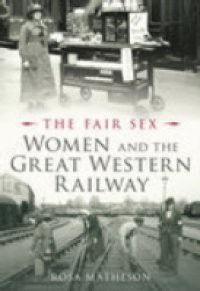The Great Western Railway struggled with what was called 'the women question' for many years. It had heartily agreed with The Railway Sheet and Official Gazette that 'the first aim of women's existence is marriage, that accomplished, the next is ordering her home'. Yet women were the cheapest form of labour, apart from young girls, presenting the company with a dilemma and the GWR finally succumbed to allowing women to work after heavy external pressures. Using over 100 pictures, Swindon author Rosa Matheson traces the development of this problematic relationship, from its beginnings in the 1870s when women were employed as sewers and netters at Swindon Works, through the changes wrought by the two world wars and entry of women into railway offices - fiercely opposed by the company and by the unions and many men who resented sharing the lowly paid but prestigious title of 'clerk' with women. The book also uses many original documents and forms as well as written and oral testimonies providing first-hand insights into the women's experiences.

